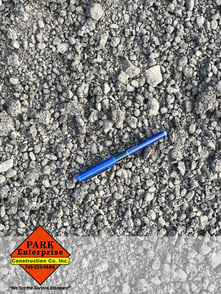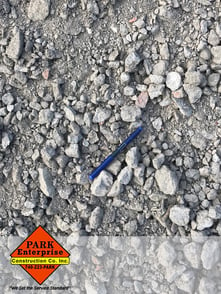Wait! Don’t dump that! There’s still life in that crushed up, old driving surface.
The day finally came for you to rip up your asphalt or concrete parking lot and start anew. While you’ll fondly remember your old lot and all the great times you had together, the friendship isn’t actually over. The material itself can be crushed, recycled, and given fresh life.
You can rest easy knowing you helped the environment - and your organization’s bottom line.
Recycling Asphalt and Concrete: The Wise Choice for the Environment and Your Wallet
First, let’s explain how the recycling process works for both asphalt and concrete.
With asphalt, the old driving surface is milled down to the base. Those millings, the size and consistency of small stones, can be reused as an attractive top dressing for a stone parking lot or simply melted down to make fresh asphalt.
With concrete, the old driving surface is excavated and crushed down to any appropriate size. Crushed concrete can be reused as a base for a new driving surface.
Ease Your Financial Burden
There are variables involved in all aspects of construction and demolition. Location, market trends, and access to both raw and recycled materials affect the overall financial picture. Generally speaking, you could save anywhere from 10% to more than 50% on a parking lot reconstruction project from using reclaimed concrete and asphalt.
Let’s say a contractor rips up your concrete lot and leaves it at the site. It can be recycled immediately without any transportation costs. If the recycled asphalt or concrete must be sourced off-site, you’d still likely save 10%-20%.
Help the Environment
Asphalt, the most recycled material on the planet, comes from crude oil. It occurs naturally (like at the La Brea Tar Pits in Los Angeles). As a man-made element, it is the heaviest byproduct of the oil-refining process. So the price is controlled by the regular ebb and flow of oil prices.
Most new asphalt mixes contain about 25% recycled material. Reclaimed asphalt lowers our dependence on fossil fuels and your carbon footprint.
Recycled concrete goes through an impact crusher and a rotor turning at a very high RPM to ground and pound the material to a mixture of smaller stones and fine dust. The compactible mixture can be used as a cheaper alternative to #304 stone aggregate for building strong foundations.
Every ounce of concrete recycled cuts down on:
- Debris in landfills
- Excessive mining
- Pollution from transporting new material
What’s more, if concrete contains steel rebar, that too can be collected and recycled (particularly useful during steel supply-and-demand-related price spikes).
Recycling Asphalt and Concrete Has Cost-Saving and Environmental Benefits
So weigh your options carefully, whether you’re ripping up your old parking lot to for a clean slate or paving a new location. Everyone can benefit from recycling as an environmental consideration. You can benefit from recycling as a definite cost-saving measure.
Don’t you think your asphalt and concrete deserves a new lease on life? It’s better off back in your parking lot than thrown over a cliff somewhere.






